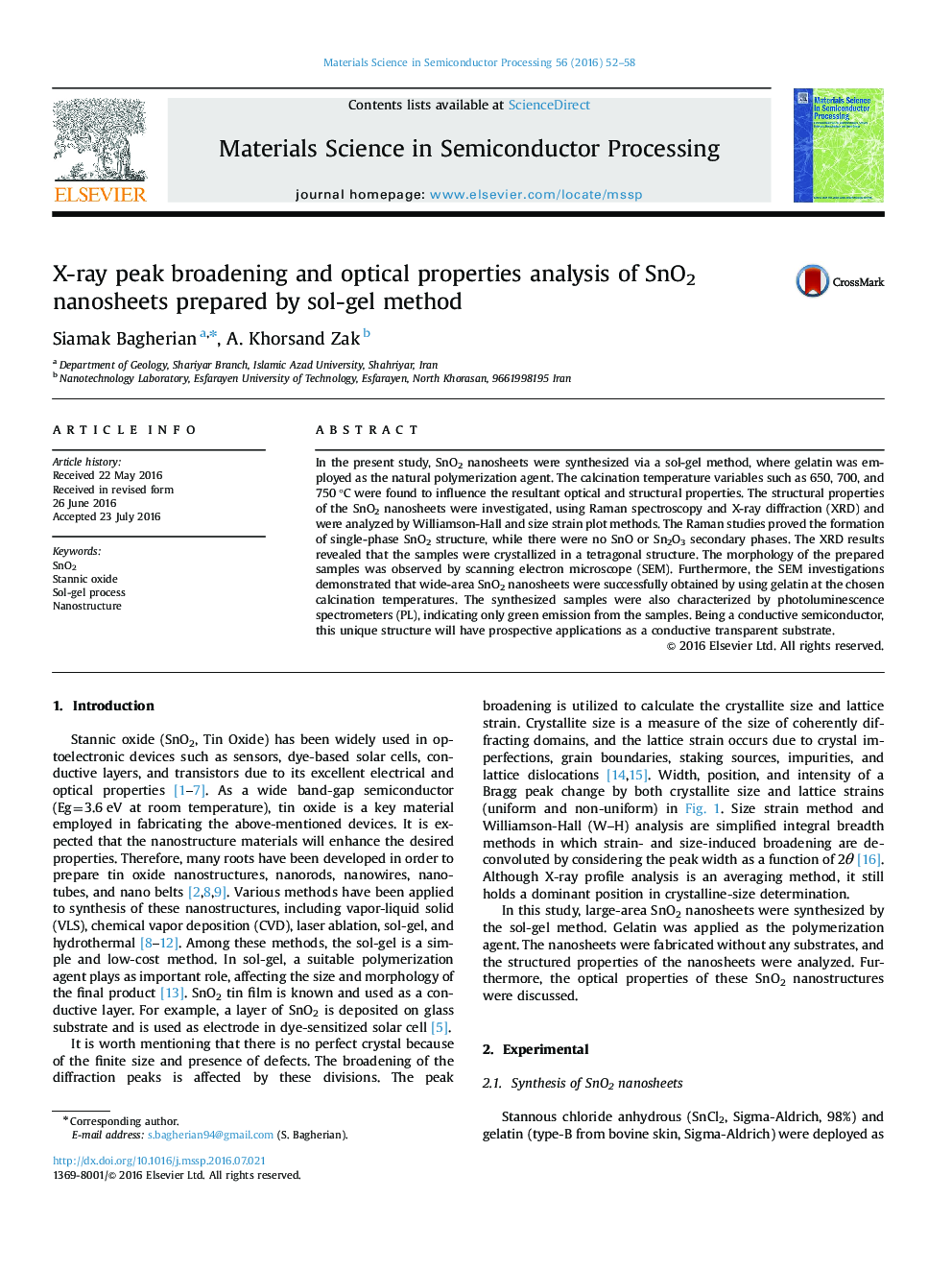| Article ID | Journal | Published Year | Pages | File Type |
|---|---|---|---|---|
| 7118282 | Materials Science in Semiconductor Processing | 2016 | 7 Pages |
Abstract
In the present study, SnO2 nanosheets were synthesized via a sol-gel method, where gelatin was employed as the natural polymerization agent. The calcination temperature variables such as 650, 700, and 750 °C were found to influence the resultant optical and structural properties. The structural properties of the SnO2 nanosheets were investigated, using Raman spectroscopy and X-ray diffraction (XRD) and were analyzed by Williamson-Hall and size strain plot methods. The Raman studies proved the formation of single-phase SnO2 structure, while there were no SnO or Sn2O3 secondary phases. The XRD results revealed that the samples were crystallized in a tetragonal structure. The morphology of the prepared samples was observed by scanning electron microscope (SEM). Furthermore, the SEM investigations demonstrated that wide-area SnO2 nanosheets were successfully obtained by using gelatin at the chosen calcination temperatures. The synthesized samples were also characterized by photoluminescence spectrometers (PL), indicating only green emission from the samples. Being a conductive semiconductor, this unique structure will have prospective applications as a conductive transparent substrate.
Related Topics
Physical Sciences and Engineering
Engineering
Electrical and Electronic Engineering
Authors
Siamak Bagherian, A. Khorsand Zak,
